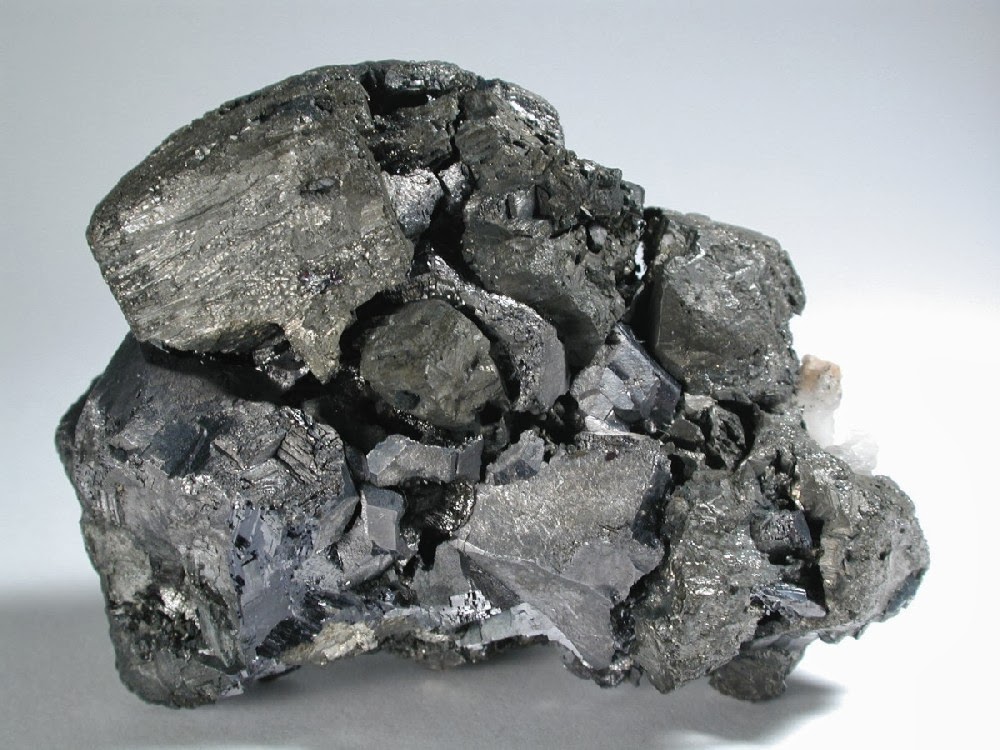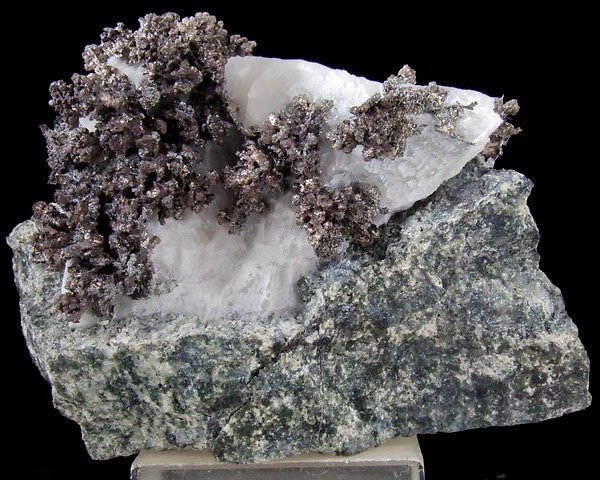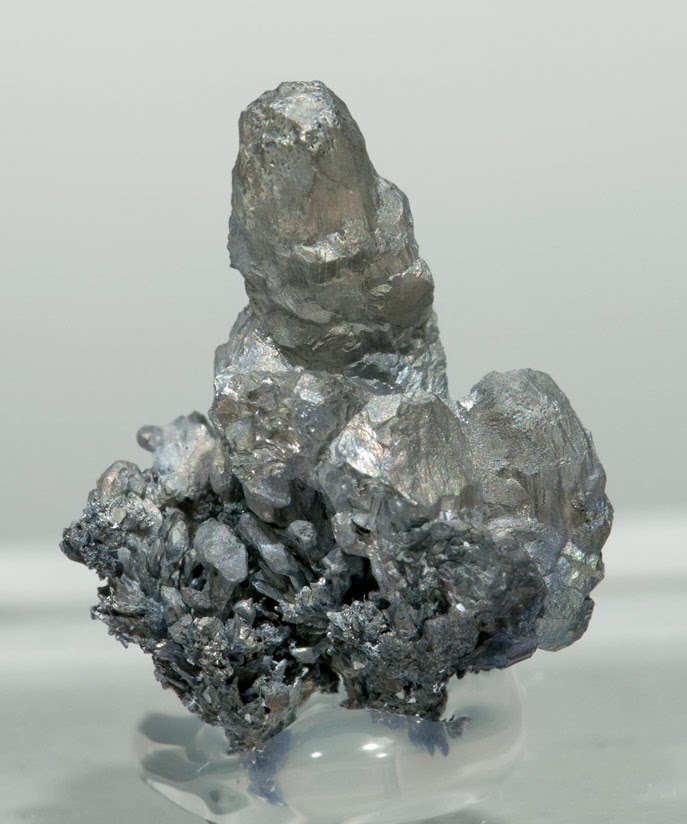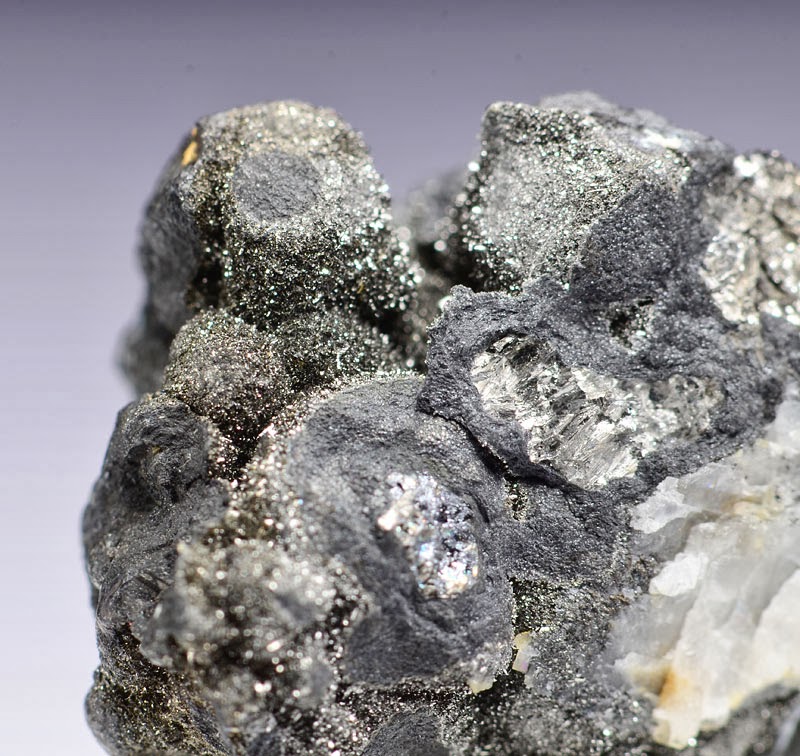
Chemical Formula: Ag3Sb
Locality: Wolfach, Baden, Germany.
Name Origin: From the Greek, meaning “bad alloy.”
The silver antimonide mineral dyscrasite has the chemical formula Ag3Sb. It is an opaque, silver white, metallic mineral which crystallizes in the orthorhombic crystal system. It forms pyramidal crystals up to 5 cm and can also form cylindrical and prismatic crystals.
Crystallography and properties
Dyscrasite is a metal ore and is opaque. In reflected light, however, it demonstrates weak anisotropism. Dyscrasite’s color under plane polarized light is most likely dark grey/black. When spun on a rotatable stage of a microscope (under plane polarized light), dyscrasite’s color should slightly change shades. This property is called pleochroism. Dyscrasite exhibits very weak reflected light pleochroism.
Dyscrasite belongs to the orthorhombic crystal class, meaning all three of its axes (a, b, and c) are unequal in length and are 90° to each other.
Physical Properties
Cleavage: {001} Distinct, {011} Distinct, {110} Imperfect
Color: Gray, Yellow, Black, Silver white.
Density: 9.4 – 10, Average = 9.69
Diaphaneity: Opaque
Fracture: Sectile – Curved shavings or scrapings produced by a knife blade, (e.g. graphite).
Hardness: 3.5-4 – Copper Penny-Fluorite
Luminescence: Non-fluorescent.
Luster: Metallic
Magnetism: Nonmagnetic
Streak: silver white
Photos













